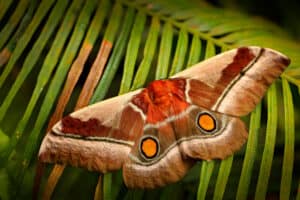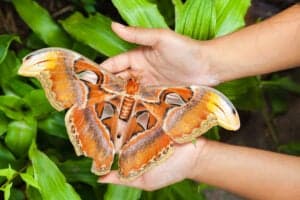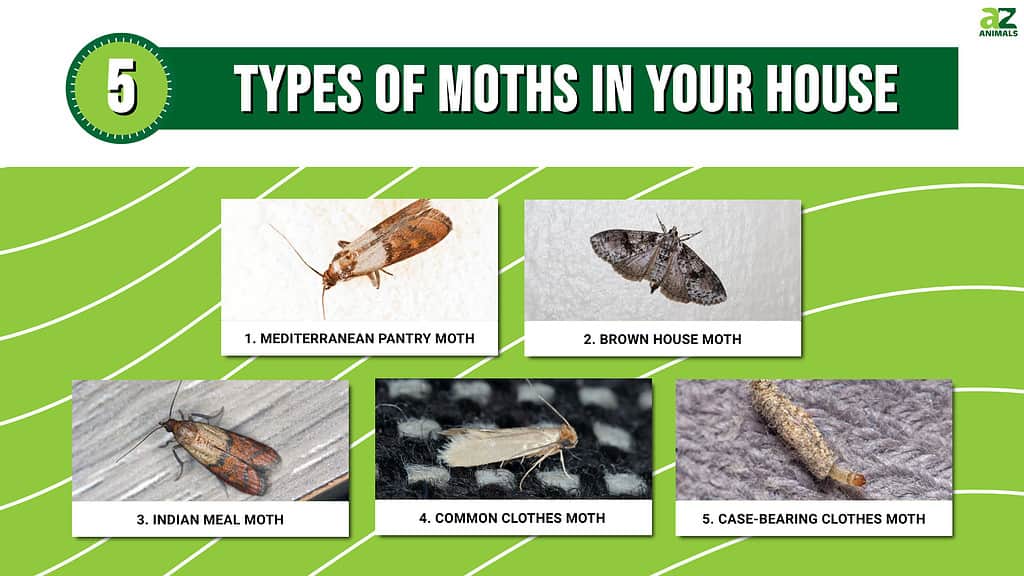
You’ve noticed something afoot in your home. Maybe you’ve noticed your clothes have unusual holes in them or your pantry has some tiny poop. You may have moths. Discover five types of moths in your house, including how to identify them and remove them!
5 Types of Moths in Your House: Identification
Pantry Moths
1. Mediterranean Pantry Moth
Scientific name: (Ephestia kuehniella)
Pantry moths are also known as almond or raisin moths. Typically, these are already in stored food products. It can be worrisome to see moths flying out of the pantry. The next best action to take is to put on an investigator hat and find out why. The larvae or eggs may be already present in packed foods such as raisins, nuts, and dried foods. Try to check for these before purchasing! Pantry moths thrive in warm and humid environments. Where there is food debris, crumbs, and spills, there may just be Mediterranean pantry moths. These moths love these types of environments because they provide them with the food sources they love. To prevent an infestation, keep your pantry area tidy and all your snacks sealed tightly.

Pantry moths are found in prepackaged foods.
©Jurik Peter/Shutterstock.com
2. Brown House Moth
Scientific name: (Hofmannophila pseudospretella)
Brown house moth wings are light brown. They are active at night, their eggs are tiny, and they lay them near their food sources. The larvae are creamy white, and their heads are brownish. They are not able to fly very well, so they flutter instead. They are attracted to light. That is the reason you might see them fluttering about at night near light sources. They spin silk fibers and eat anything from grains to natural fibers like wool. They are considered pests and leave behind silk webs and excrement as if to say, “Brown house moths were here!” Regular dusting and vacuuming is the best way to ensure brown house moths don’t settle in.
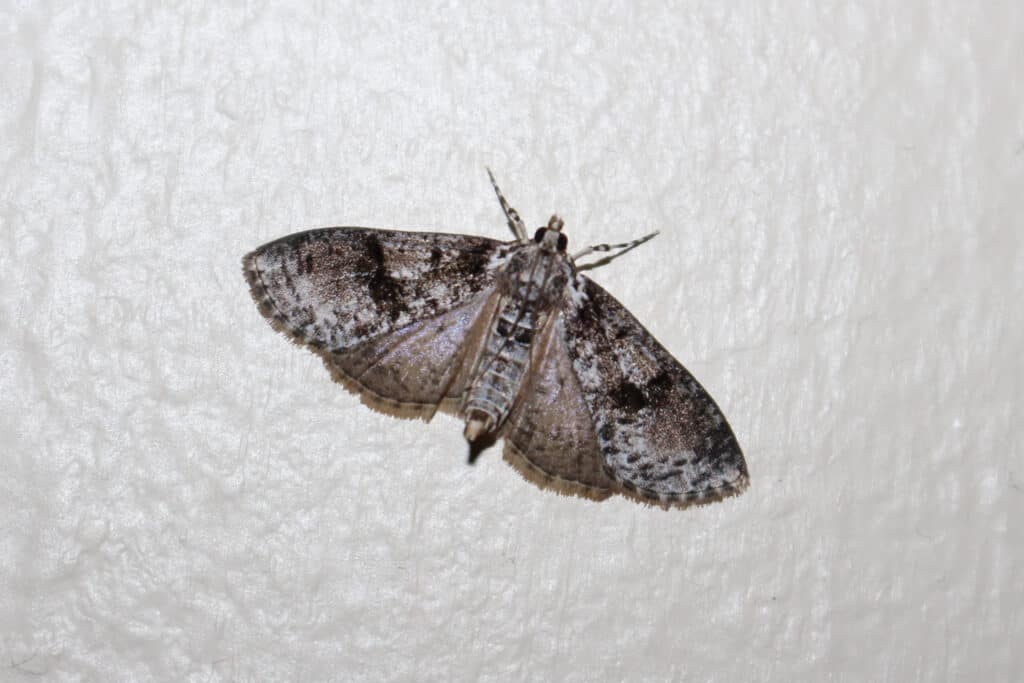
The common brown house moth can live for 120-150 days.
©OmniGrace/Shutterstock.com
3. Indian Meal Moth
Scientific name: Plodia interpunctella
Indian meal moth larvae undergo many molts, and as they grow, they cause more and more damage. These moths spin cocoons inside cracks, and they do not eat during the pupal stage while it’s transitioning into adulthood (they get their fill during the larvae phase!). It takes about 20 days to complete this process, but it depends on the weather conditions. Their life cycle only lasts from 25 to 135 days. Food availability dictates their survival rate. To prevent infestation, you must use airtight food containers.
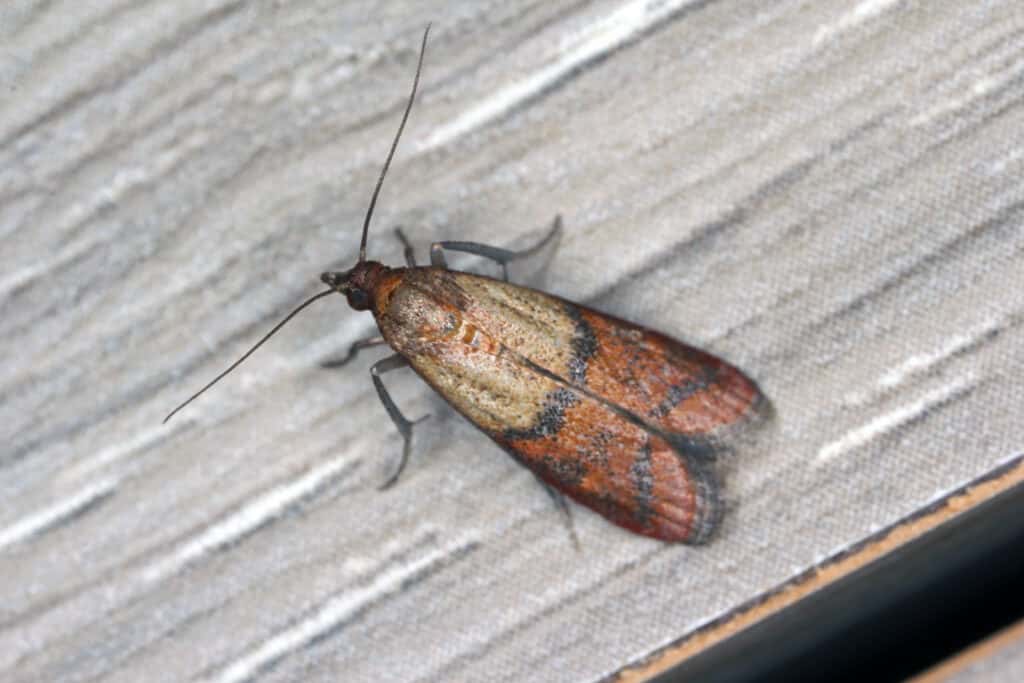
Indian meal moths are a common domestic pest that goes after stored food products in the home.
©Tomasz Klejdysz/Shutterstock.com
Clothes Moths
1. Common Clothes Moth
Scientific name: Tineola bisselliella
Common clothes moths are very sophisticated as they only like fine fibers such as silk, cashmere, wool, feathers, and any blend of any of these. The only thing is that they do not pull these fibers over their bodies like a frock. They eat them! The way to bring these home is by purchasing from thrift stores or infested furniture. Once the larvae are attached to these items, they can easily spread to other textiles in your home. Don’t worry, you don’t have to forego your vintage favorites, just wash used clothing before you store it and keep your closet light and airy to prevent infestations. Other food sources for these moths include sweaty clothes, body oils, and food stains on clothing.
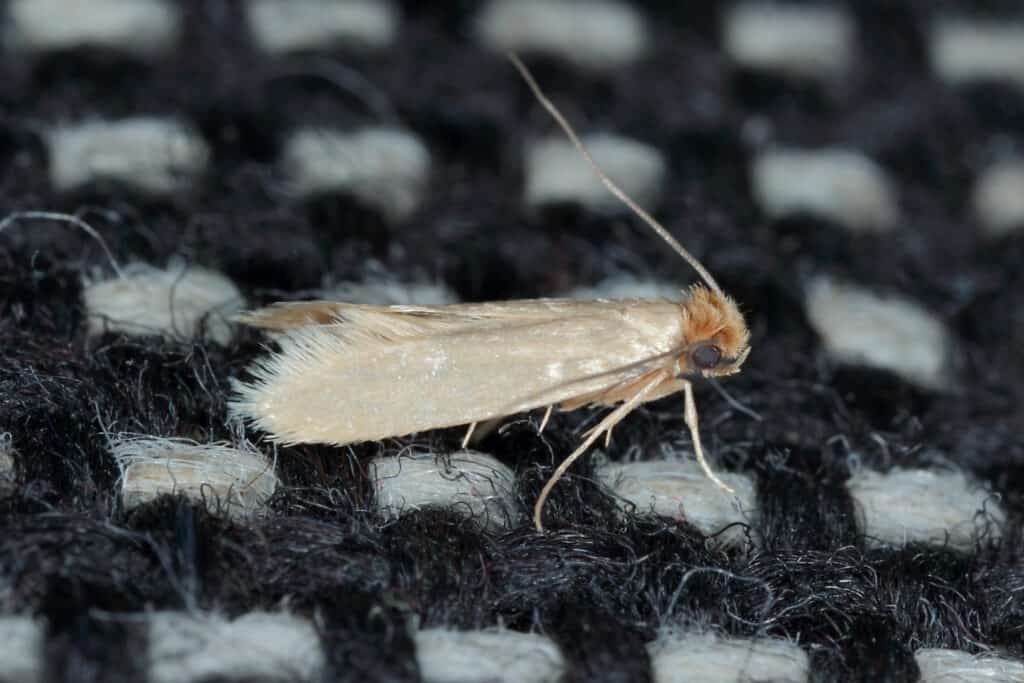
Clothes moths are common household pests that feast in fibers.
©Thomas Kleidysz/Shutterstock.com
2. Case-Bearing Clothes Moth
Scientific name: Tinea pellionella
Adult case-bearing clothes moths are very small and have a golden color. Their wings have dark spots, and they feed on natural fibers. What sets their larvae apart from other moths is the way they are protected. The adults attach debris and silk to the casing so that it can act as a shelter and camouflage. The larvae carry their case as they explore their surroundings scavenging for food. To avoid an infestation on your natural fiber items, it would be best to store them in air-tight containers or garment bags. Washing or dry cleaning them before putting them away would definitely save your clothes from those fiber monsters!
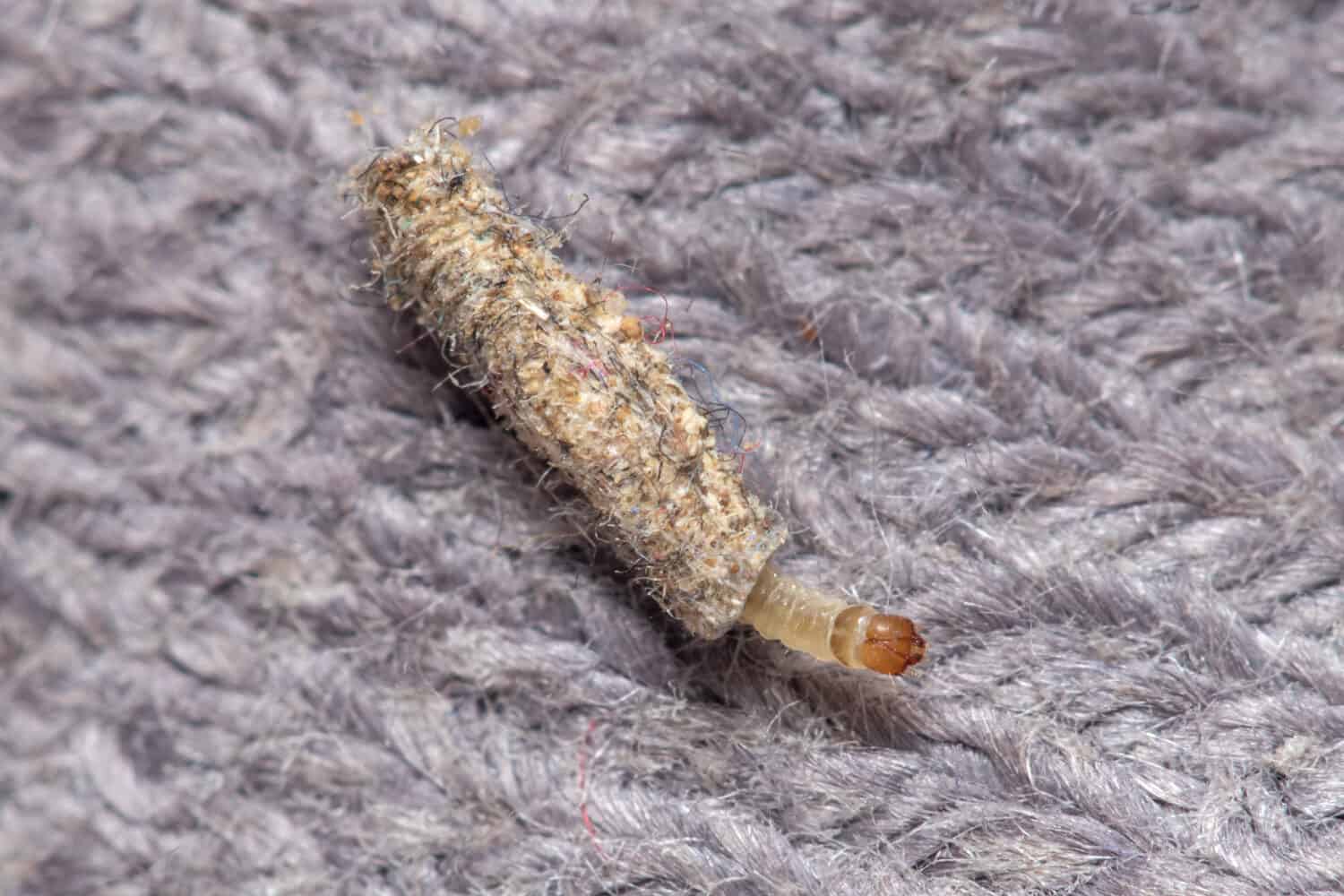
Moth larvae sporting a camouflage casing.
©JorgeOrtiz_1976/Shutterstock.com
5 Types of Moths in Your House: Removal Tips
If you’re dealing with pantry moths, you have to clear it all out. Everything! You’re going to need to carefully inspect all your snacks and say goodbye to anything that wasn’t already in an airtight container. Thoroughly clean inside your pantry — vacuum and use a vinegar and water solution. Then, let your pantry breathe for a couple of weeks before restocking. If you’re dealing with clothes moths, the best way to get rid of moths and keep your clothes and blankets is to wash them for at least half an hour in hot water (minimum 120 °F). Thoroughly vacuum your closet and keep it airy!
Summary of 5 Types of Moths in Your House
Here are 5 Types of Moths in Your House:
| Rank | Moth Types |
|---|---|
| 1 | Mediterranean Pantry Moth |
| 2 | Brown House Moth |
| 3 | Indian Meal Moth |
| 4 | Common Clothes Moth |
| 5 | Case-Bearing Clothes Moth |
The photo featured at the top of this post is © Tomasz Klejdysz/Shutterstock.com
Thank you for reading! Have some feedback for us? Contact the AZ Animals editorial team.




